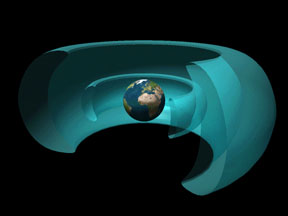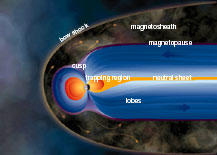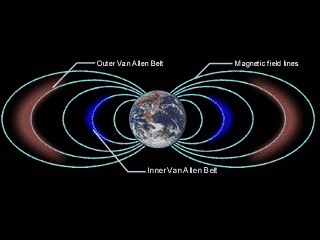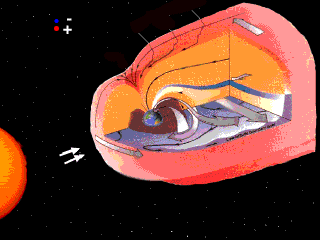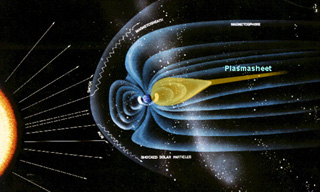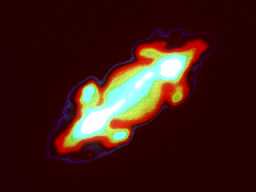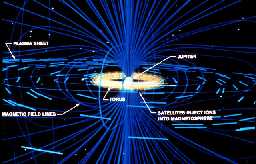Click on image for full size
Windows to the Universe
Related links:
Radiation Belts
The Earth's radiation belts are one component of the larger and more complex system called the magnetosphere. The radiation belts of the Earth are made up of energetic, electrically charged particles or electrons, protons and heavier atomic ions. These particles essentially get trapped in the magnetic field of the Earth. The kinetic energy of these particles is greater than or equal to 30 keV.The radiation belts, like the plasmasphere, are toroidally shaped. These toroids encircle the planet. The inner radiation belt extends from about 400 km above the Earth to 12,000 km. The outer radiation belt extends from about 12,000 km to 60,000 km above the Earth. At times, the two belts overlap each other.
The belts of trapped radiation near the Earth were first detected by James Van Allen in 1958. Therefore these belts are also known as Van Allen Belts.
Dr. Van Allen has also found that the principal sources of particles for the outer radiation belt are the solar wind and the ionosphere. The main sources for the inner belts are solar energetic particles and reactions with galactic cosmic rays. The eventual fate of particles in the radiation belts is to become part of the atmosphere, to collide with satellites or to escape into space.
It is extremely important that we have a good understanding of the radiation belts because the energetic particles in these toroids affect in situ measurements and may have an effect on the survival of electronic and optical equipment, human and animal life forms. "The particle population of the Earth's radiation belts makes it dangerous for humans without massive shielding to do more than quickly pass through them," reports Dr. James Van Allen.


